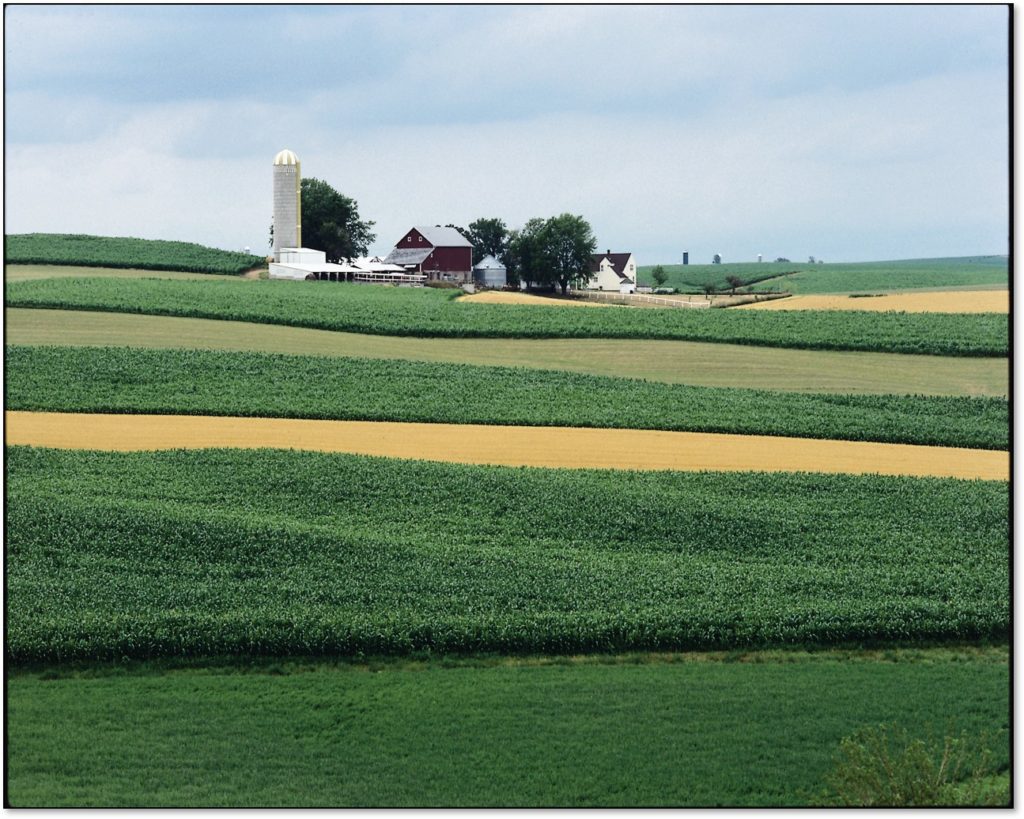
Conservation practices reduce the loss of nutrients from Colorado’s agricultural fields, according to a new study conducted by civil engineering and soil science researchers in Colorado State University’s One Water Solutions Institute.
Such conservation measures as irrigation system upgrades, vegetative buffers and different tillage practices reduce nitrogen and phosphorus in runoff from agricultural fields in Colorado, the modeling study found.
The effectiveness of conservation practices in abating runoff, also known as “edge-of-field” nutrient losses, varied by practice. Irrigation system upgrades, such as the conversion of furrow irrigation to sprinkler or drip irrigation, resulted in the greatest decline in both nitrogen and phosphorus losses. Colorado counties that adopted irrigation improvement practices experienced, on average, a 7.1 percent reduction in total nitrogen and a 33.5 percent reduction in total phosphorus lost.

The modeling analysis combined CSU’s new Edge-of-Field Conservation Tool with conservation practice data implemented through the USDA Natural Resources Conservation Service’s Environmental Quality Incentive Program known as EQIP.
“CSU’s Edge-of-Field Conservation Tool is another example of the Nonpoint Source community focusing its efforts to improve water quality. The estimates of pollutant loading reductions provided by the tool allow CDPHE’s NPS Program and its many partners to plan for the most effective ways to improve water quality through actions taken on agricultural fields,” said Kenan Diker, Agricultural Specialist at the Colorado Department of Public Health and Environment.
The agricultural industry has employed irrigation improvement practices for several decades to help minimize soil, nutrient and water losses and improve crop yields. The analysis examined select conservation practices implemented from 2008 – 2018 on irrigated fields in the South Platte, Republican, Arkansas and Rio Grande River basins, which represents about 72 percent of the state’s irrigated acreage. In the study, edge-of-field discharges of nitrogen and phosphorus were modeled before and after USDA conservation practices were implemented.
“Through stakeholder engagement, over 64 combinations of field management scenarios were modeled to simulate the range of effects on edge of field water quality,” said Tyler Wible, the lead modeler for the study.
The Edge-of-Field Conservation Tool interfaces with the USDA – ARS Soil Water Assessment Tool, known as SWAT, which is used by the agricultural industry. The tool incorporates a watershed-scale hydrological transport model used to predict nonpoint source discharges based on land use and land management practices. When combined, the modeled practices produced an 8.2 percent reduction in total nitrogen losses and 27.7 percent reduction in total phosphorus losses on average.
Colorado State University conducted the modeling analyses in partnership with Phil Brink of Brink, Inc. The analysis was funded by agricultural industry groups, the Colorado Department of Public Health and Environment and the Colorado Water Conservation Board.
The One Water Solutions Institute, based in CSU’s Department of Civil and Environmental Engineering, provides world-class research and innovative technologies to promote collaboration between the university and outside partners including public, private and non-government organizations.